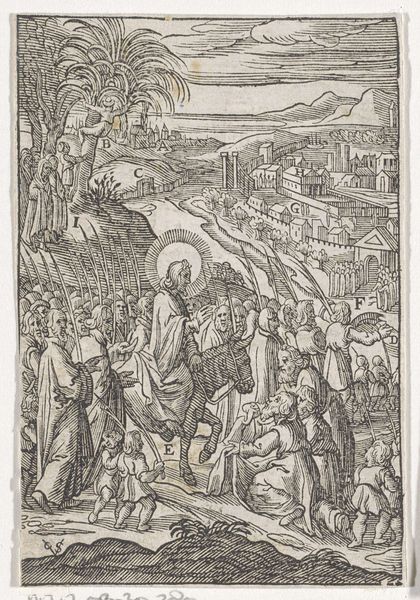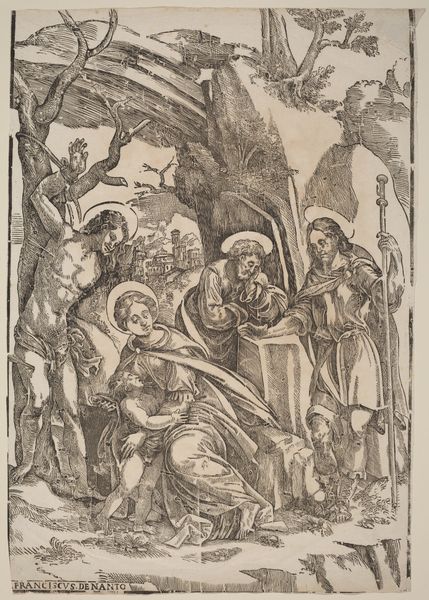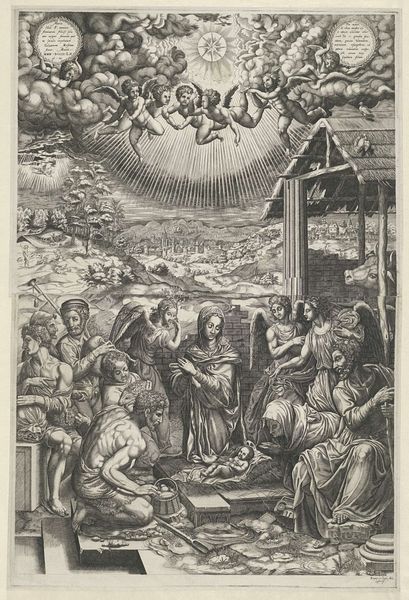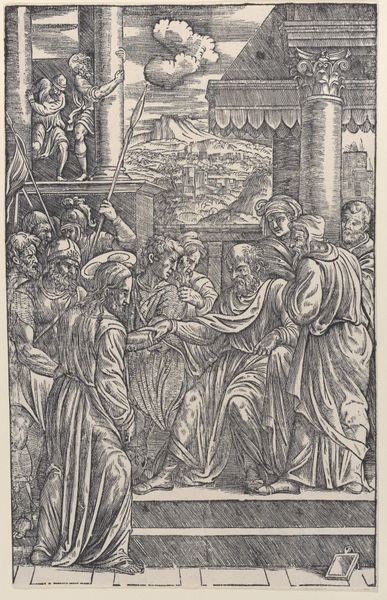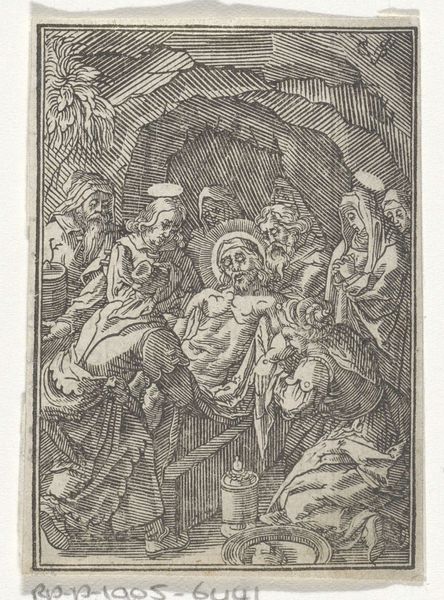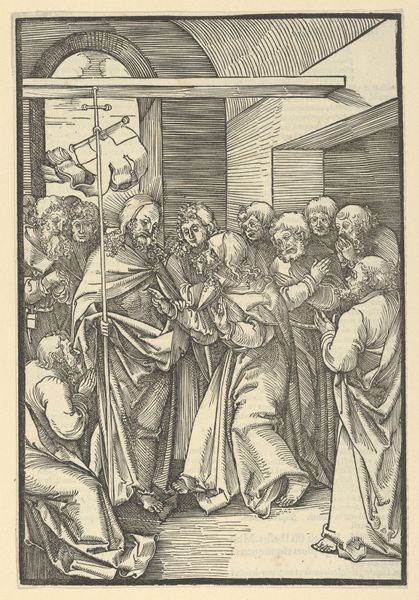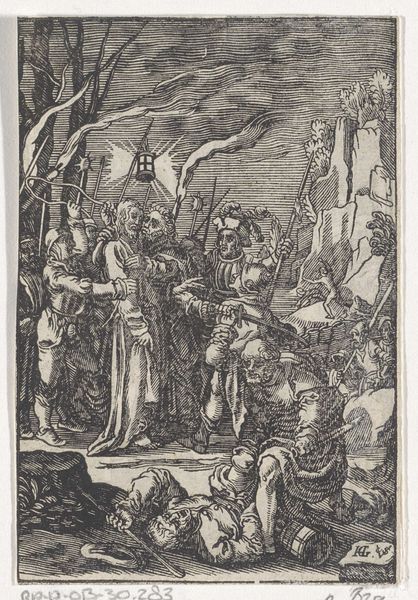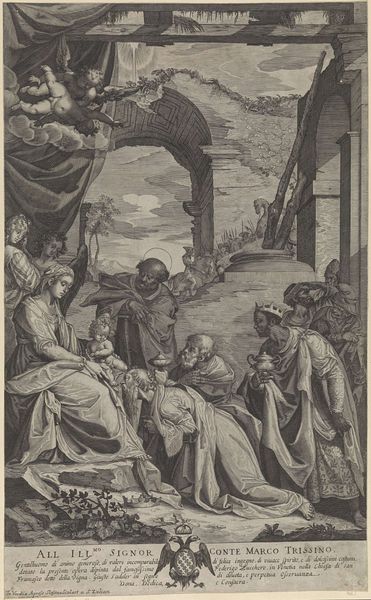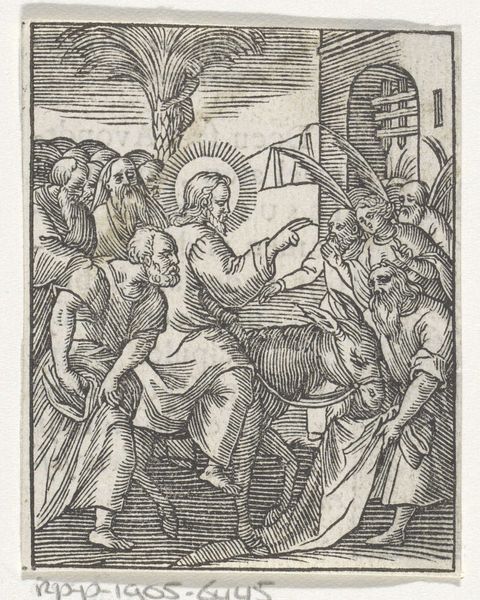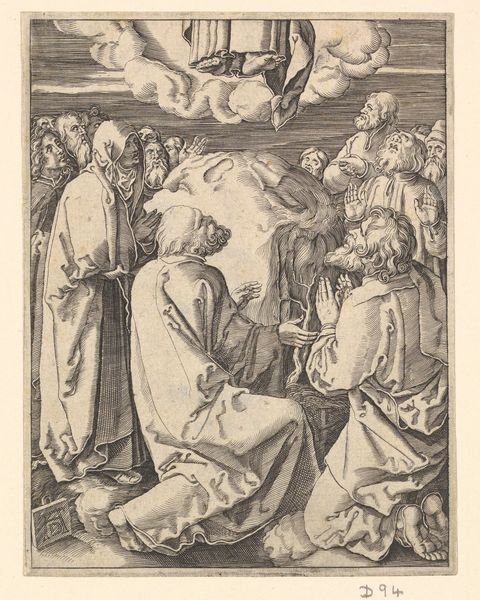
print, intaglio, engraving
# print
#
intaglio
#
landscape
#
figuration
#
history-painting
#
italian-renaissance
#
engraving
Copyright: National Gallery of Art: CC0 1.0
Curator: It’s hard to ignore the immediacy of this print, Christ's Entry into Jerusalem by Francesco Denanto. I'm immediately drawn to the stark contrast and intricate lines of the engraving. It feels almost like a woodcut in its bold simplicity. Editor: It is, at first glance, a surprisingly compressed and somewhat claustrophobic composition. Even with the landscape framing the background, the mass of figures feels intensely packed. We need to remember, though, the historical context—this image would be instantly recognizable and meaningful within the religious iconography that pervaded daily life in the Renaissance. Curator: I see what you mean. But look at how Denanto manages to convey texture, despite the linear nature of intaglio. The fur of the donkey, the fabric of the robes – it’s quite remarkable how he differentiates surfaces using only lines. Do you notice the intentional use of the void on Jesus which attracts our eyes in particular? Editor: It’s also critical to remember the purpose of such an image. This wasn't simply art for art's sake. It was part of a broader social narrative, a visual tool intended to reinforce faith, power, and social order, distributed to people using relatively cost effective processes compared to larger painting available to fewer patrons. Consider where and how people would have encountered this print. Was it a personal devotional item, a teaching aid, or a public declaration? The implications are significant. Curator: I suppose you're right, that changes everything. Zooming out again though, I think the composition draws you immediately to the emotion of this historic moment - everyone is reaching for Christ as He approaches. A powerful display of community. Editor: Precisely, it prompts one to ask who those “everyone” are intended to be in this representation of early Italian life, and, critically, who is left out, excluded, or rendered invisible by this carefully constructed representation. These choices impact social understanding then as they do now. Curator: Thinking about the piece, there is so much to consider. Editor: Yes, Denanto certainly created a complex, engaging image—ripe for interpretation.
Comments
No comments
Be the first to comment and join the conversation on the ultimate creative platform.
